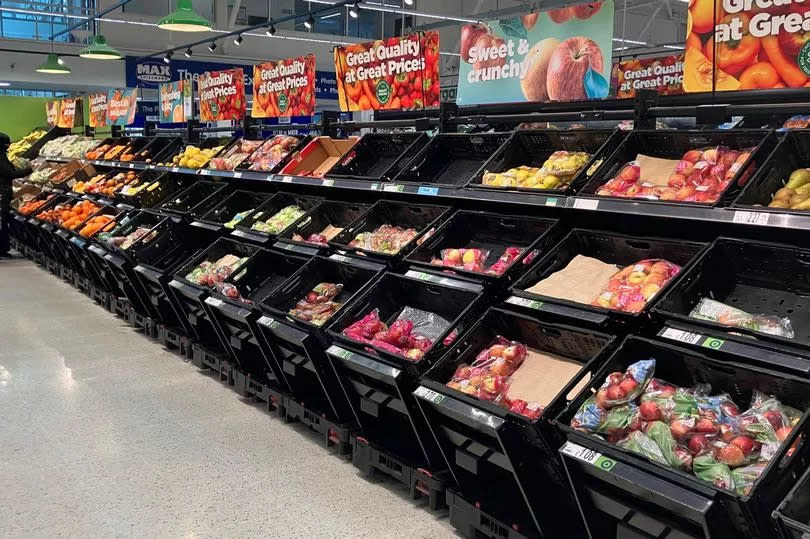
By Lucia Mutikani
WASHINGTON (Reuters) -U.S. business activity nearly stalled in February amid mounting fears over tariffs on imports and deep cuts in federal government spending, erasing all the gains notched in the aftermath of President Donald Trump’s election victory.
The tumble in activity to a 17-month low reported by S&P Global on Friday was the latest in a string of surveys to suggest that businesses and consumers were becoming increasingly rattled by the Trump administration’s policies.
Business and consumer sentiment soared following the Republican’s November 5 victory on hopes for a less-stringent regulatory environment, tax cuts and low inflation.
“The Trump business honeymoon is over, it seems,” said Kyle Chapman, FX markets analyst at Ballinger Group.
S&P Global’s flash U.S. Composite PMI Output Index, which tracks the manufacturing and services sectors, fell to 50.4 this month. That was the lowest reading since September 2023 and was down from 52.7 in January. A reading above 50 indicates expansion in the private sector.
The services sector accounted for the drop in the PMI, contracting for the first time since January 2023. Manufacturing activity rose to an eight-month high, though that was attributed to “front-running potential cost increases or supply shortages linked to tariffs.”
The S&P Global survey was conducted between February 10-20.
Trump in his first month in office slapped an additional 10% tariff on Chinese imports. A 25% levy on imports from Mexico and Canada was suspended until March. Trump this month raised tariffs on steel and aluminum imports to 25%.
He said on Tuesday that he intended to impose auto tariffs “in the neighborhood of 25%” and similar duties on semiconductors and pharmaceutical imports. In addition, federal government spending is being slashed, with thousands of workers from scientists to park rangers, mostly those on probation, fired by billionaire Elon Musk’s Department of Government Efficiency, or DOGE – an entity created by Trump.
“Companies report widespread concerns about the impact of federal government policies, ranging from spending cuts to tariffs and geopolitical developments,” said Chris Williamson, chief business economist at S&P Global Market Intelligence.
“Sales are reportedly being hit by the uncertainty caused by the changing political landscape, and prices are rising amid tariff-related price hikes from suppliers.”
Stocks on Wall Street were lower. The dollar rose against a basket of currencies. U.S. Treasury yields slipped.
BROAD DETERIORATION
Homebuilder sentiment hit a five-month low in February, with tariffs cited for the reversal.
A survey from the University of Michigan on Friday showed its consumer sentiment index dropped to a 15-month low of 64.7 in February from a final reading of 71.7 in January. That was lower than the preliminary reading of 67.8.
Consumers’ 12-month inflation expectations deteriorated to 4.3%, the highest reading since November 2023, from 3.3% in January. Over the next five years consumers saw inflation running at 3.5%, the highest since 1995, compared with 3.2% in January.
The Federal Reserve in January paused its policy easing cycle, having cut interest rates by 100 basis points since September. Minutes of the U.S. central bank’s January 28-29 meeting published on Wednesday showed Trump’s initial policy proposals raised concern at the Fed about higher inflation.
“You can bet that Chairman Powell and company will take note of that and that this further seals the case for the Fed remaining on hold for a while,” said Stephen Stanley, chief U.S. economist, Santander U.S. Capital Markets.
“The question is whether President Trump and the administration are paying attention to the souring of consumer moods due to the threat of tariffs.”
In financial markets, though, concern about a weakening economy appeared to outweigh fear of resurgent inflation, with futures contracts that settle to the Fed’s policy rate pricing in a firmer chance of two interest rate cuts this year, rather than just one. Market bets put the first cut as likely by June, and the second as soon as October.
Inflation concerns, meanwhile, dominated in the S&P Global’s survey. Its measure of prices paid by businesses for inputs increased to 58.5 this month from 57.4 in January. It was boosted by the manufacturing gauge, which jumped to 63.5 from 57.4 last month, “overwhelmingly blamed by purchasing managers on tariffs and related supplier-driven price hikes.”
Manufacturers passed on the higher prices to consumers, which could raise the cost of goods. Goods deflation has accounted for the slowdown in inflation.
While services businesses also faced higher prices for inputs, they appeared to absorb some of the increase as slowing demand boosted competition, which could bode well for the overall inflation outlook, with price pressures trending higher in recent months. A measure of prices charged by businesses for their goods and services fell to 51.6 from 53.9 last month.
The survey’s measure of new orders received by private businesses dropped to 50.6 this month from 53.7 in January. Its measure of employment decreased to 49.4 from 54.0 in January.
The survey’s flash manufacturing PMI edged up to 51.6 from 51.2 in January. Economists polled by Reuters had forecast the manufacturing PMI rising to 51.5.
Its flash services PMI dropped to 49.7, the first contraction in just over two years, from 52.9 last month. That confounded economists’ expectations for a 53.0 reading.
The raft of weak reports extended to the housing market.
The National Association of Realtors said in a third report that sales of previously owned homes decreased 4.9% in January to a seasonally adjusted annual rate of 4.08 million units, blamed on high mortgage rates and house prices. Mortgage rates track the yield on the 10-year Treasury note, which remains elevated amid the economy’s resilience and stubborn inflation.
There are also concerns that tariffs would raise the cost of building materials, including lumber and appliances, making it harder for builders to close a national housing shortage that is keeping house prices elevated and reducing affordability.
“Given that borrowing costs have stayed above 7%, we expect this weakness in buying activity to continue in the coming months,” said Bradley Saunders, North America economist at Capital Economics.
(Reporting by Lucia Mutikani; Additional reporting by Dan Burns; Editing by Chizu Nomiyama and Andrea Ricci)
EMEA Tribune is not involved in this news article, it is taken from our partners and or from the News Agencies. Copyright and Credit go to the News Agencies, email news@emeatribune.com Follow our WhatsApp verified Channel





